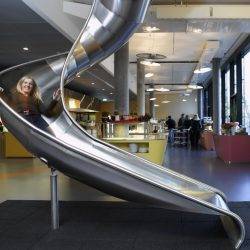August 23, 2017
UK employers concerned for future of the post Brexit economy despite booming jobs market
 Employer confidence in the UK economy has moved into negative territory, according to the latest JobsOutlook survey by the Recruitment & Employment Confederation (REC). The net balance fell from +6 per cent last month to -3 per cent in the latest report, as 31 per cent of employers now expect the economy to worsen and just 28 per cent expect it to improve. Employers are still looking to hire, with one in five (19 per cent) planning to increase permanent headcount in the next three months. Confidence in making hiring and investment decisions remains positive with a net balance of 10 per cent, but is at its lowest for the past year. In addition to signs of deteriorating employer confidence, consumers are also becoming more pessimistic. The GfK’s index of consumer confidence fell to -12, equalling last year’s post-referendum low.
Employer confidence in the UK economy has moved into negative territory, according to the latest JobsOutlook survey by the Recruitment & Employment Confederation (REC). The net balance fell from +6 per cent last month to -3 per cent in the latest report, as 31 per cent of employers now expect the economy to worsen and just 28 per cent expect it to improve. Employers are still looking to hire, with one in five (19 per cent) planning to increase permanent headcount in the next three months. Confidence in making hiring and investment decisions remains positive with a net balance of 10 per cent, but is at its lowest for the past year. In addition to signs of deteriorating employer confidence, consumers are also becoming more pessimistic. The GfK’s index of consumer confidence fell to -12, equalling last year’s post-referendum low.





















 Some individuals within local government are holding back tech to preserve the status quo – a new survey suggests. According to the research, these people feel threatened by new technology and believe it will be disruptive to their ways of working. While the survey by 8×8 of staff working in local government suggested a significant appetite for new technology, more than a fifth (22 percent) say certain individuals are holding back tech adoption to preserve the status quo. This view is more prevalent amongst those in IT procurement, where more than a third (35 percent) believe colleagues are standing in the way of technology because it will disrupt what they already have in place. Only 51 percent of respondents believe senior management understand the importance of new technology and just 21 percent think they invest enough money to stay up to date with the latest developments. This contrasts with the private sector, where over half (56 percent) believe there is sufficient investment in new technology.
Some individuals within local government are holding back tech to preserve the status quo – a new survey suggests. According to the research, these people feel threatened by new technology and believe it will be disruptive to their ways of working. While the survey by 8×8 of staff working in local government suggested a significant appetite for new technology, more than a fifth (22 percent) say certain individuals are holding back tech adoption to preserve the status quo. This view is more prevalent amongst those in IT procurement, where more than a third (35 percent) believe colleagues are standing in the way of technology because it will disrupt what they already have in place. Only 51 percent of respondents believe senior management understand the importance of new technology and just 21 percent think they invest enough money to stay up to date with the latest developments. This contrasts with the private sector, where over half (56 percent) believe there is sufficient investment in new technology.











August 17, 2017
How workplace design shapes and reflects organisational hierarchies
by Angela Love • Comment, Facilities management, Workplace design
(more…)